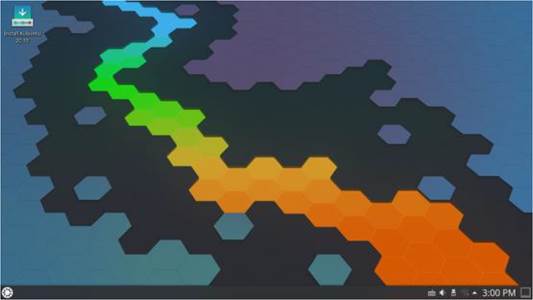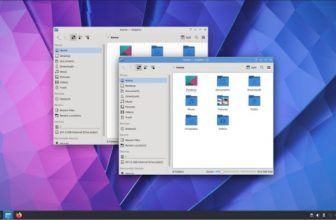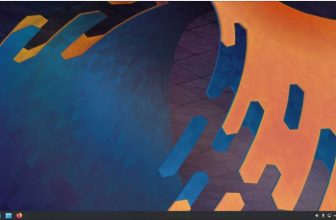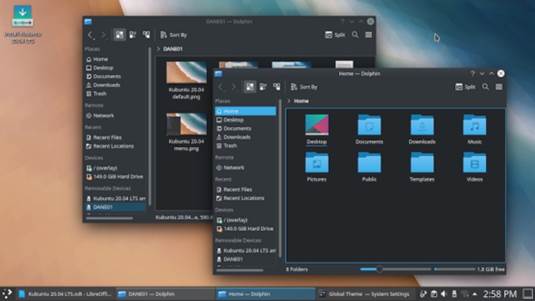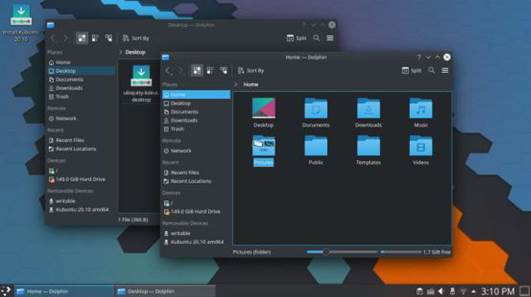
Written by Adam Hunt
Kubuntu users are well-known for their dedication to the distribution and for some very good reasons, too. Read our Kubuntu 20.10 Review.
Table of Contents
This fresh release of Kubuntu came out on 22 October, 2020. This is the distribution’s 32nd release and the 11th one with the KDE project’s Qt-based Plasma 5 desktop so it was reasonable to expect it to be very refined and, indeed it is.
Being a “standard” release, Kubuntu 20.10 is supported for nine months, until July 2021. There will be two more standard releases, out in April and October 2021, before the LTS.
As I have noted in other recent reviews, the first standard release after a long term support (LTS) release in the Ubuntu universe often tells us a lot about the developers’ plans for this development cycle that is all leading to the next LTS release, which in this case will be Kubuntu 22.04 LTS, due out in April 2022.
This Kubuntu release was accompanied by the usual “release announcement”, but there were no “release notes”, the document that usually details the changes in each new version. The Kubuntu developers indicated that the release notes were “not available due to wiki login problems”. I presume this was due to the migration of release documentation from wiki.ubuntu.com to discourse.ubuntu.com. Hopefully this problem will be solved by the next Kubuntu release in April, as the release notes are of great value to both users and software reviewers.
System Requirements
The Kubuntu recommendations for system requirements have not changed with this release. They remain the same as for Ubuntu: a dual core 2 Ghz processor, 4 GiB of RAM and VGA video of at least 1024 x 768 pixels, plus a CD/DVD drive or a USB port for the installation media.
Booting It Up
I made up a Kubuntu USB installer using the Ubuntu Startup Disk Creator and tested it in a series of live sessions. As with all the other Ubuntu flavors, booting to the USB stick results in an automatic file system check, which is good, to ensure that the USB stick is error-free.
Kubuntu runs easily and fast from the USB stick, a far cry from running it from a DVD, which can be very slow. The USB gives very similar performance to an actual installed version.
New
Unlike Xubuntu 20.10, which introduced no changes at all, Kubuntu 20.10 brings a number of careful, incremental improvements.
This version of Kubuntu is being promoted as “Cloud Ready”, including “access to cloud and container technologies”. The release also includes a new and striking default hexagon-themed wallpaper, by Sandra Smukaste, named “Flow”. If that is not to your taste there are many alternate wallpapers provided, all of them quite beautiful, or you can use your own, of course.
This release incorporates the Plasma 5.19.5 desktop, an upgrade from Kubuntu 20.04 LTS’s Plasma 5.18. This release also includes the Applications 20.08 collection, a change from 20.04 LTS’s 19.12. While not the very latest versions, these both include a lot of incremental improvements that together make the KDE desktop even better. Most of the changes are hidden away in the menus, but some, like global menus being no longer the default, are obvious as soon as the applications are opened.
Kubuntu’s main menu system, which I noted in 20.04 LTS was cumbersome and clunky, seems to run much more smoothly in 20.10. There is also the option of a “simple menu” as well as the Application Dashboard widget which provides a full screen application menu, much like Ubuntu’s, with the touch of one desktop button.
Applications
The Kubuntu KDE desktop has its own collection of Qt-based
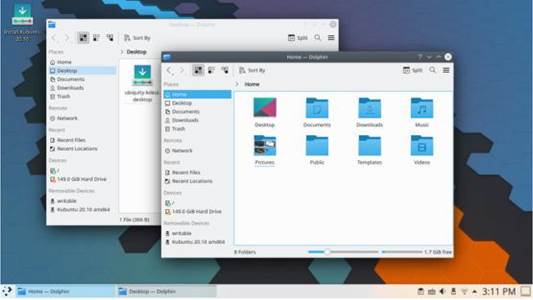
applications, including the Qt version of LibreOffice. The one exception remains the Firefox web browser, which is GTK-based. GTK applications run fine on Kubuntu but they may not integrate as well in terms of themes or menus.
The KDE project has a Qt-based browser, Falkon, in its collection of applications, but it seems to be no quite ready for operational use yet My tests of the current version showed that it can be a RAM hog and lacks spellchecking. Falkon development seems to have stalled too, with the last release still at version 3.1.0, a year and a half old, released on 19 March, 2019. As a result, Firefox remains the browser of choice for Kubuntu, at least for

the time being.
Some of the applications included in Kubuntu 20.10 are:
Ark 20.08.1 archive manager
Discover 2.1.2 software store*
Dolphin 20.08.2 file manager
Elisa 20.08.2 music player
Firefox 82.0 web browser
Gwenview 20.08.2 image viewer
Kate 20.08.2 text editor
Kcalc 20.08.1 calculator
KDE Partition Manager 4.1.0 partition editor*
Konsole 20.08.2 terminal emulator
Kmahjongg 20.08.1 game
Kmines 20.08.1 game
Konversation 1.7.5 IRC client*
Kpatience 20.08.2 game
Ksudoku 20.08.1 game
KsysGuard 5.19.5 system monitor
Ktorrent 5.2.0 bit torrent client*
LibreOffice 7.0.2 office suite, less only
LibreOffice Base database
Muon 5.8.0 package manager*
Okular 20.08.2 PDF viewer
PulseAudio 13.99.2 audio controller
Skanlite 2.2.0 scanning utility
Spectacle 20.08.2 screenshot tool
Startup Disk Creator 0.3.8 (usb- creator-kde) USB ISO writer
Thunderbird 78.3.2 email client
VLC 3.0.11.1 media player
* Indicates the same software version as used in Kubuntu 20.04 LTS
KDE Applications 20.08 brings some changes to the core KDE applications. For example, the Dolphin file manager includes new preview capabilities, now able to create thumbnails for more types of files than before. Also, when Dolphin is re-opened, it displays the same folder it was showing when it was last closed.
As has been the case for the last few releases, Kubuntu 20.10 does not include a default CD/DVD burning application, a logical move since optical drives have not come with new computers for many years now. If needed, the KDE standard CD/DVD burner, K3B, or an alternative such as the GTK- based Brasero or Xfburn, can always be installed from the repositories.
By default, Kubuntu 20.10 does not come with a webcam application, an image editor or video editor. However, if needed, there are several applications of each category available in the repositories.
Settings
Kubuntu probably has the widest range of user-controllable settings of any Ubuntu-based
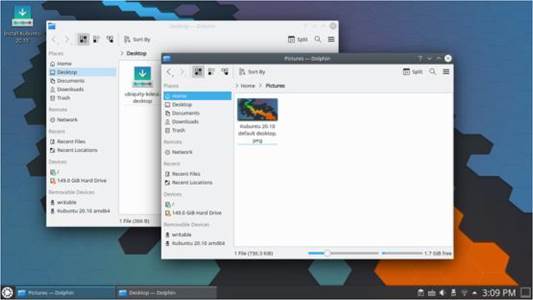
distribution and perhaps of any Linux distribution anywhere. There are so many setting parameters available, that Kubuntu can be customized to fully meet user preferences.
For example, there are:
• Three global themes: Breeze, Breeze Dark, Kubuntu
• Six Plasma styles: Air, Breeze, Breeze Dark, Breeze Light, Kubuntu and Oxygen
• Four application styles: Breeze, Fusion, MS Windows 9x and Oxygen
• Two window decoration themes: Breeze and Plastik
• Six colour schemes: Breeze, Breeze Dark, Breeze High Contrast, Breeze Light, Oxygen and Oxygen Cold
• Eight icon sets: Adwaita, Breeze, Breeze Dark, Humanity, HumanityDark, LoginIcons, Ubuntu-Mono- Dark and Ubuntu-Mono-Light
• Three emoticon sets: Breeze EmojiOne and Konqi
• Two cursor styles: Breeze and Breeze Light
And these are just the options that come installed in Kubuntu by default. Most of the setting pages also offer one-button download and installation of many, many more alternative themes, icon sets, cursors, etc.
Kubuntu 20.10 also offers a choice of 66 pre-installed desktop widgets. These are small applications that can be added to the desktop to improve functionality. For instance the Application Dashboard widget provides a large, full screen application menu launched from a desktop button. There are also widgets for an analog desktop clock, weather reports, and a CPU monitor. In addition to the 66 widgets provided by default, hundreds more that can be downloaded.
The Kubuntu user philosophy is contents the diametric opposite of Ubuntu. Ubuntu feels like an enterprise desktop designed for office use, with very limited user customization options available, whereas Kubuntu feels like a distribution for developers, with almost unlimited customization. A Kubuntu installation can quickly be configured to look like anything and I am sure that no two are alike.
I think the biggest danger with all these options is that users could spend a lot of time tweaking the themes, functionality and appearance. I am not sure how a dedicated Kubuntu user would duplicate their previous desktop on a new installation, unless they had a very good checklist.
Conclusions
Considering that this is the 32nd release of Kubuntu and the 11th one with the Plasma 5 desktop, it really is a mature Linux distribution with very little need for big changes. If the directions charted by the developers in 20.10 are any indication, then we can expect just slow, incremental and carefully- considered changes to be introduced during this development cycle, with each release just a little bit better than the last.
Kubuntu’s main appeal seems to be it’s almost infinite customization options, allowing the user to start from the default desktop and make it look and work any way they want. Add in the integrated, Qt-based applications suite (except perhaps for Firefox) and the result is a smooth user experience that can be easily made to feel very personally theirs. That has to engender the kind of loyalty that Kubuntu users are known for.
Most Kubuntu users will probably stay with the 20.04 LTS release until the next one, 22.04 LTS, but Kubuntu 20.10 actually has enough improvements to entice some Kubuntu users to upgrade, even given its short, nine month support period.
Adam Hunt started using Ubuntu in 2007 and has used Lubuntu since 2010. He lives in Ottawa, Ontario, Canada, in a house with no Windows.
